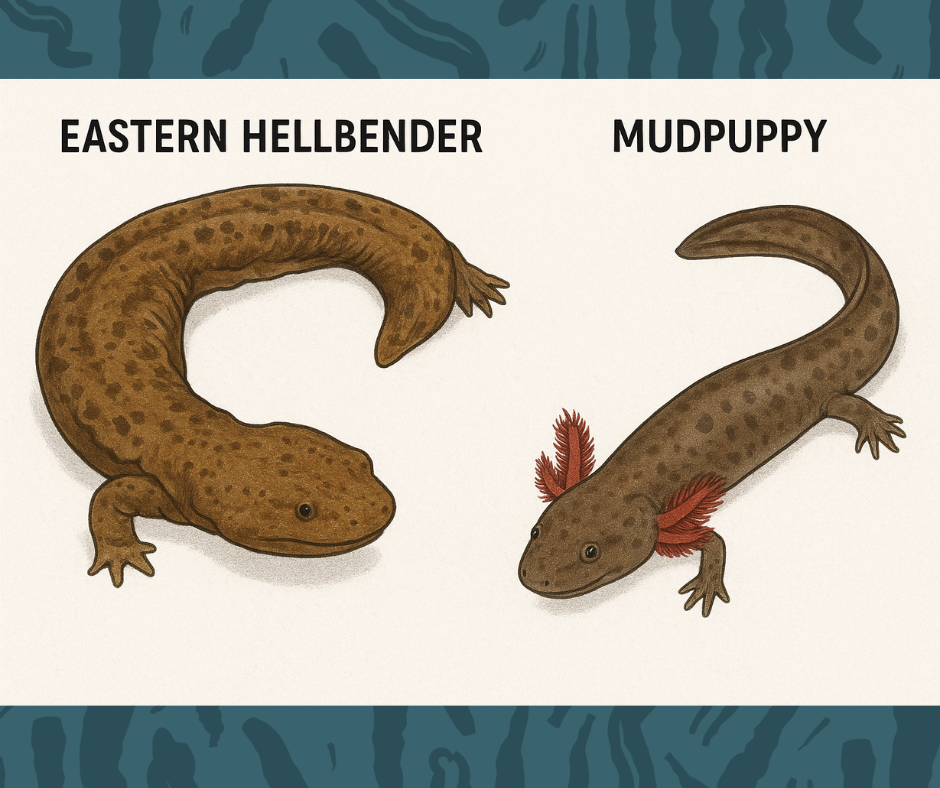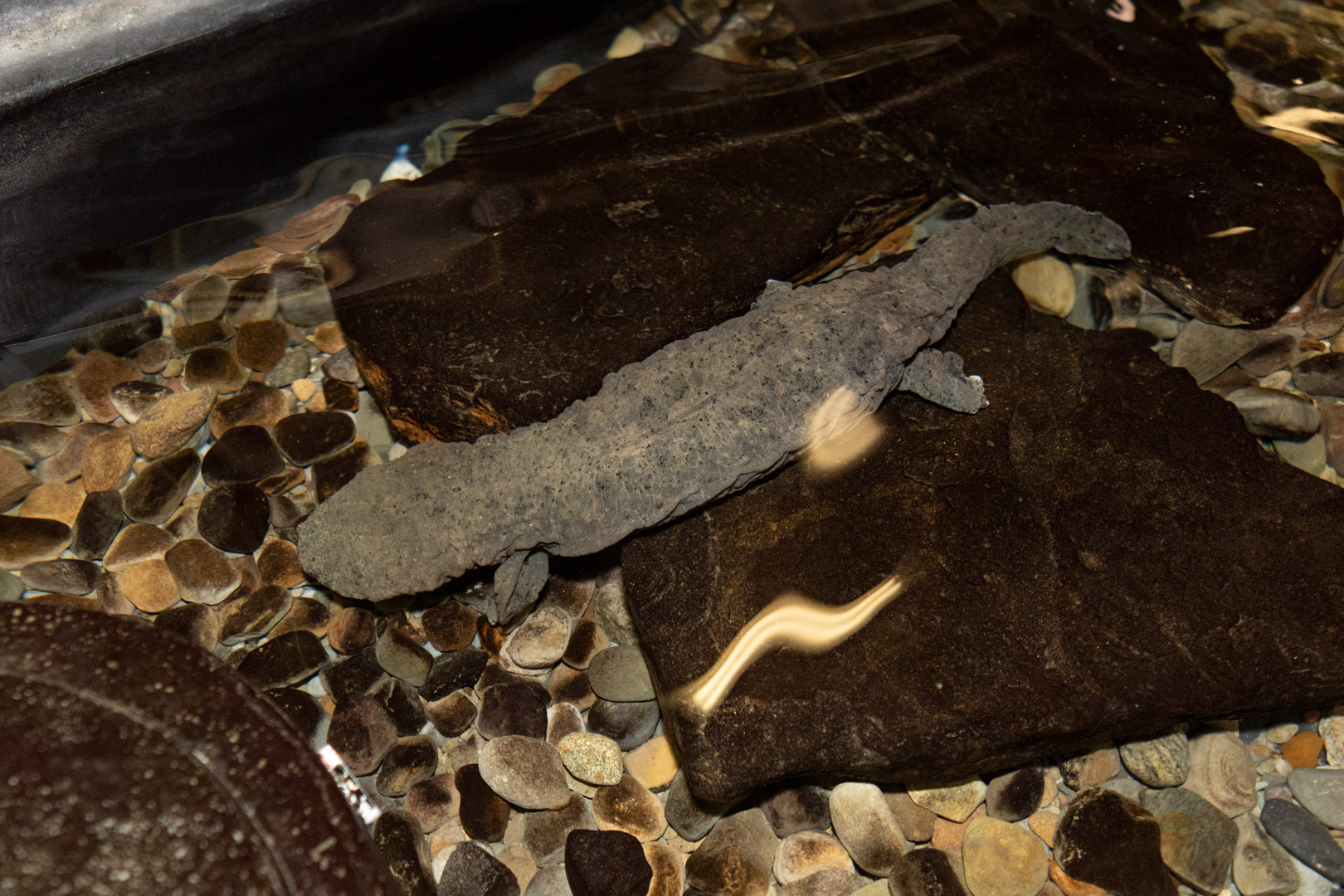If you’ve seen the exciting national headlines about the recent release of endangered hellbenders into Ohio streams, you’re not alone. The news is sparking pride and excitement across the country, but it’s also creating a bit of confusion.
Many people who live outside of the hellbender’s natural range are familiar with another aquatic salamander: the mudpuppy. They’re often spotted by anglers and creek explorers, and it’s easy to assume they’re the same animal. They’re not.
Understanding the Species
Eastern hellbender (Cryptobranchus alleganiensis) is North America’s largest salamander, reaching up to 24 inches in length. Their broad, flat bodies and wrinkled skin are built for life in cold, clear, fast-moving streams. They breathe mostly through their skin, which means clean, well-oxygenated water is critical for their survival. Hellbenders are secretive, spending most of their lives tucked beneath large rocks. Their presence in a stream is a powerful sign of a healthy ecosystem.
Mudpuppies (Necturus maculosus), on the other hand, are much more abundant across North America because of less threats to their habitats. Typically 8 to 13 inches long, mudpuppies are easily recognized by their feathery red external gills, which they keep throughout their lives. They live in a wider range of aquatic environments, including ponds, lakes, and slow-moving streams, and can tolerate lower water quality than hellbenders.

Spotting the Difference
While both are salamanders, the two species are actually not closely related. The hellbenders’ closest relatives are the Chinese and Japanese giant salamanders, and the mudpuppy’s closest relatives are found in Europe.
- Gills: Mudpuppies have frilly red external gills. Adult hellbenders do not.
- Size: Hellbenders can grow up to 2 feet long, making them the largest salamander on the continent.
- Skin: Hellbenders have a flat, wrinkled body. Mudpuppies are smooth and sleeker.
- Habitat: Hellbenders require clean, fast-flowing streams with large rocks.
- Location: While Eastern hellbenders are only found in the Ohio River drainage, mudpuppies thrive in a variety of waters throughout the state.
- Status: Hellbenders are endangered in Ohio and declining across much of their range. Mudpuppies are more abundant because of less threats to their native habitats.
Why Hellbender Conservation Matters
Even if you’ve never seen a hellbender in their native range, their survival tells us something about the health of our environment. They depend on pristine, free-flowing waterways with plenty of oxygen. When hellbenders thrive, it means the streams are clean enough to support other wildlife too, from insects and fish to the water we rely on in our own communities.
That’s why their recovery isn’t just a win for wildlife. It’s a win for everyone.
How You Can Help
Whether you live near a hellbender stream or in an area where mudpuppies are more common, simple choices can make a difference:
- Avoid moving or disturbing large stream rocks, which serve as shelter.
- Prevent sediment and runoff by planting native plants along creeks and stream banks.
- Keep waterways clean by properly disposing of trash and chemicals.
- Share accurate information with others so more people understand why this work matters.
A Shared Responsibility for Clean Water
The release of these endangered salamanders into protected waterways is part of a larger effort led by partners including Columbus Zoo and Aquarium and The Wilds. Their return is a hopeful sign that recovery is possible when communities come together.
Even if hellbenders don’t live in your backyard, the health of their habitat reflects the health of ours. Protecting waterways today means a cleaner, more vibrant world for the wildlife we love and the people who depend on these same waters tomorrow.

Read about the Ohio Center for Wildlife Conservation Learn More about Hellbenders from The Wilds









